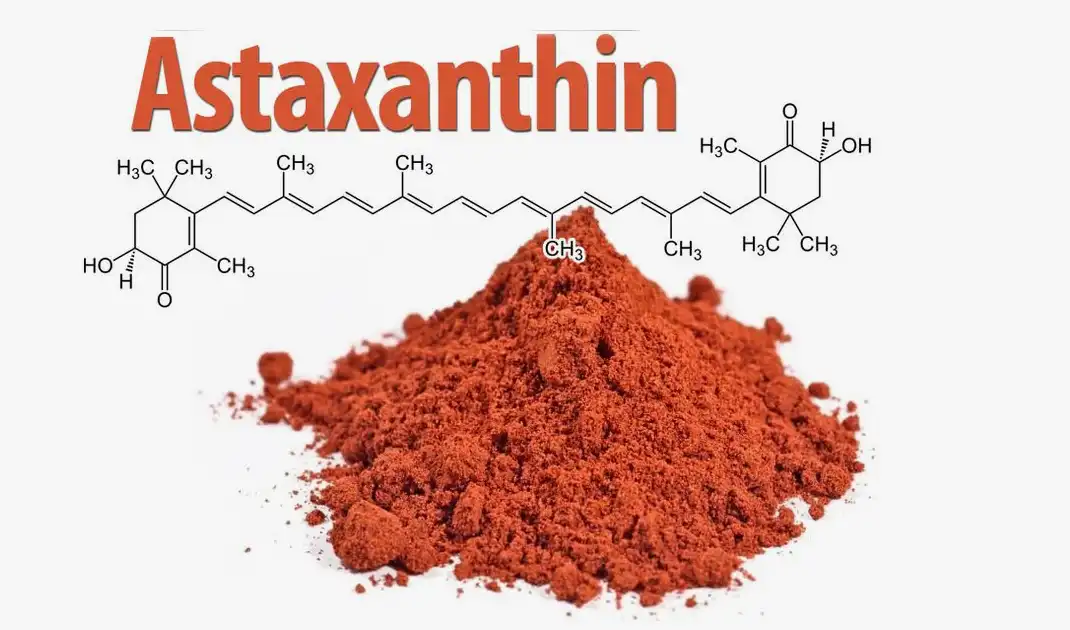Astaxanthin Powder Stability, Storage, and Shelf Life
Astaxanthin powder, derived from Haematococcus pluvialis microalgae, is a powerful antioxidant with numerous health benefits. As a manufacturer and supplier of high-quality astaxanthin powder, Avans NutriHealth Co., Ltd. understands the critical importance of maintaining the stability, proper storage, and maximizing the shelf life of this valuable supplement. Astaxanthin's potency and efficacy can be significantly affected by various environmental factors, making it essential for manufacturers, distributors, and consumers to be well-informed about the best practices for handling and storing this product. In this comprehensive guide, we will explore the key factors that influence astaxanthin powder stability, discuss optimal storage conditions, and provide insights on extending its shelf life to ensure maximum potency and effectiveness in various applications, including nutraceuticals, cosmetics, and food products.

Key Factors Affecting Stability: Light, Heat, and Oxygen Exposure for Astaxanthin Powder
Impact of Light Exposure on Astaxanthin Powder Stability
Light exposure is a critical factor that can significantly impact the stability of astaxanthin powder. As a carotenoid pigment, astaxanthin is highly sensitive to light, particularly UV radiation. When exposed to light, astaxanthin molecules can undergo photo-oxidation, leading to degradation and loss of potency. This process can result in color changes and a decrease in the antioxidant properties of the powder. To mitigate the effects of light exposure, it is crucial to store astaxanthin powder in opaque, light-resistant containers or packaging materials. Amber-colored glass bottles or aluminum foil bags, like those offered by Avans NutriHealth Co., Ltd., are excellent choices for protecting the powder from harmful light rays. Additionally, storing the product in a dark place or away from direct sunlight can help maintain its stability and prolong its shelf life.
Effects of Heat on Astaxanthin Powder Quality and Potency
Heat is another significant factor that can compromise the stability of astaxanthin powder. Elevated temperatures can accelerate chemical reactions and molecular breakdown, leading to a decrease in the overall quality and potency of the product. When exposed to high temperatures, astaxanthin molecules may undergo structural changes, resulting in a loss of their beneficial properties. To preserve the integrity of astaxanthin powder, it is essential to store it in a cool environment, ideally below 25°C (77°F). Refrigeration or storage in a temperature-controlled area can help maintain the powder's stability and extend its shelf life. Avans NutriHealth Co., Ltd. recommends storing their astaxanthin powder in a cool, dry place to ensure optimal preservation of its potency and efficacy. It is also important to avoid exposing the powder to sudden temperature fluctuations, as this can lead to moisture condensation and further degradation.
The Role of Oxygen in Astaxanthin Powder Degradation
Oxygen exposure is a critical factor that can significantly impact the stability of astaxanthin powder. As a potent antioxidant, astaxanthin is highly susceptible to oxidation when exposed to air. This process can lead to the formation of free radicals and the breakdown of the astaxanthin molecules, resulting in a loss of potency and efficacy. To minimize oxygen exposure, it is crucial to store astaxanthin powder in airtight containers or packaging materials. Vacuum-sealed aluminum foil bags, like those used by Avans NutriHealth Co., Ltd., are an excellent choice for preserving the powder's integrity. Additionally, using oxygen absorbers or nitrogen flushing techniques during packaging can help create an inert environment, further protecting the astaxanthin powder from oxidation. It is also important to minimize the frequency of opening and closing the container to reduce exposure to air and maintain the product's stability over time.
Best Practices for Storage to Maintain Potency and Prevent Degradation in Supplement Manufacturing
Optimal Packaging Materials for Astaxanthin Powder Preservation
Choosing the right packaging materials is crucial for maintaining the potency and preventing degradation of astaxanthin powder in supplement manufacturing. Avans NutriHealth Co., Ltd. recommends using high-quality, opaque packaging materials that provide protection against light, oxygen, and moisture. Aluminum foil bags with multiple layers, including a moisture barrier and an oxygen barrier, are ideal for preserving the stability of astaxanthin powder. These bags not only protect against environmental factors but also offer convenience in handling and storage. For smaller quantities, amber glass bottles with airtight seals can be an effective option. It's essential to ensure that the packaging is properly sealed after each use to minimize exposure to air and moisture. Additionally, incorporating desiccants or oxygen absorbers within the packaging can further enhance the protection against degradation, especially in humid environments.
Temperature and Humidity Control in Storage Facilities
Maintaining proper temperature and humidity control in storage facilities is essential for preserving the quality and potency of astaxanthin powder. Avans NutriHealth Co., Ltd. recommends storing astaxanthin powder in a cool, dry environment with temperatures below 25°C (77°F) and relative humidity levels below 60%. Implementing climate control systems in storage areas can help maintain consistent conditions and prevent fluctuations that may lead to degradation. It's important to monitor temperature and humidity levels regularly using calibrated devices and keep accurate records to ensure compliance with storage requirements. In cases where refrigeration is necessary, care should be taken to prevent condensation when removing the product from cold storage. Gradual temperature adjustments and the use of desiccants can help mitigate moisture-related issues. Proper ventilation in storage areas can also help maintain stable conditions and prevent the buildup of heat or humidity that could compromise the integrity of the astaxanthin powder.
Inventory Management and Stock Rotation Strategies
Effective inventory management and stock rotation strategies are crucial for maintaining the quality and potency of astaxanthin powder in supplement manufacturing. Implementing a first-in, first-out (FIFO) inventory system ensures that older stock is used before newer batches, minimizing the risk of product expiration. Avans NutriHealth Co., Ltd. recommends clearly labeling all containers with production dates, lot numbers, and expiration dates to facilitate proper stock rotation. Regular inventory audits should be conducted to identify and remove any expired or compromised products. It's also important to establish a system for tracking environmental conditions and product quality throughout the storage period. This can include periodic testing of astaxanthin powder samples to verify potency and stability. By maintaining detailed records of storage conditions, quality checks, and inventory movement, manufacturers can ensure traceability and quickly address any issues that may arise. Additionally, training staff on proper handling and storage procedures is essential to maintain the integrity of the astaxanthin powder throughout the supply chain.
A Guide to Extending Shelf Life: How Proper Conditions Preserve Antioxidant Efficacy
Optimizing Storage Conditions for Maximum Shelf Life
To extend the shelf life of astaxanthin powder and preserve its antioxidant efficacy, it is crucial to optimize storage conditions. Avans NutriHealth Co., Ltd. recommends storing astaxanthin powder in a cool, dry place away from direct sunlight and heat sources. The ideal temperature range for long-term storage is between 4°C and 20°C (39°F to 68°F). Maintaining consistent temperature and humidity levels is key to preventing degradation. Using climate-controlled storage facilities or refrigeration units can help achieve these optimal conditions. It's important to minimize temperature fluctuations, as they can lead to moisture condensation and accelerate degradation. Additionally, storing astaxanthin powder in airtight containers with minimal headspace can reduce exposure to oxygen and moisture, further extending its shelf life. For bulk storage, consider using inert gas flushing techniques to create an oxygen-free environment within the packaging. Regularly monitoring and documenting storage conditions can help identify any potential issues early and ensure that the astaxanthin powder maintains its potency throughout its intended shelf life.
The Role of Antioxidants and Stabilizers in Preserving Astaxanthin
Incorporating antioxidants and stabilizers can play a significant role in preserving the potency and extending the shelf life of astaxanthin powder. Avans NutriHealth Co., Ltd. utilizes natural antioxidants such as vitamin E (tocopherols) and rosemary extract to enhance the stability of their astaxanthin powder. These additional antioxidants work synergistically with astaxanthin to neutralize free radicals and prevent oxidation. Stabilizers like ascorbyl palmitate can also be added to improve the powder's resistance to degradation. When formulating products containing astaxanthin, it's important to consider the compatibility of these additives with other ingredients and the intended application. The use of encapsulation technologies, such as microencapsulation or nanoencapsulation, can provide an additional layer of protection for astaxanthin molecules, shielding them from environmental factors and potentially extending their shelf life. It's crucial to conduct stability studies to determine the most effective combination of antioxidants and stabilizers for each specific formulation, ensuring optimal preservation of astaxanthin's antioxidant efficacy over time.
Quality Control Measures and Stability Testing Protocols
Implementing robust quality control measures and stability testing protocols is essential for ensuring the long-term efficacy and safety of astaxanthin powder. Avans NutriHealth Co., Ltd. employs a comprehensive quality assurance program that includes regular testing of astaxanthin content, purity, and stability throughout the product's shelf life. High-performance liquid chromatography (HPLC) is commonly used to quantify astaxanthin levels and monitor any degradation over time. Accelerated stability studies, conducted under controlled conditions of temperature, humidity, and light exposure, can provide valuable insights into the product's long-term stability and help predict its shelf life. Real-time stability testing, where samples are stored under recommended conditions and periodically analyzed, offers the most accurate assessment of product stability. It's important to establish clear acceptance criteria for stability tests and implement corrective actions if any deviations are observed. Additionally, conducting microbial testing and monitoring for potential contaminants is crucial to ensure the overall quality and safety of the astaxanthin powder. By maintaining detailed records of all quality control measures and stability test results, manufacturers can demonstrate compliance with regulatory requirements and provide customers with confidence in the product's consistency and efficacy throughout its shelf life.
Conclusion
In conclusion, maintaining the stability, proper storage, and extending the shelf life of astaxanthin powder is crucial for preserving its potency and efficacy. By understanding and addressing the key factors that affect stability, implementing best practices for storage, and utilizing appropriate packaging materials, manufacturers and consumers can ensure that astaxanthin powder retains its valuable antioxidant properties. With the right approach to quality control, stability testing, and inventory management, the shelf life of astaxanthin powder can be optimized, allowing for its continued use in various applications across the nutraceutical, cosmetic, and food industries.
At Avans NutriHealth Co., Ltd., we are committed to providing high-quality astaxanthin powder and comprehensive support to our customers. As a leading manufacturer and supplier in China, we leverage our expertise in plant extracts and nutritional supplements to deliver superior products backed by rigorous quality control measures. Our state-of-the-art facilities, certified by ISO, USDA, HACCP, FSSC22000, and HALAL, ensure that we meet the highest industry standards. With an annual production capacity of 1,000 tons and a dedicated team of experts, we are well-equipped to meet your astaxanthin powder needs and provide personalized solutions. For more information or to discuss your specific requirements, please contact us at Lillian@avansnutri.com.
FAQ
Q: What is the optimal storage temperature for astaxanthin powder?
A: The ideal storage temperature for astaxanthin powder is between 4°C and 20°C (39°F to 68°F).
Q: How does light exposure affect astaxanthin powder stability?
A: Light exposure, particularly UV radiation, can cause photo-oxidation of astaxanthin molecules, leading to degradation and loss of potency.
Q: What packaging materials are best for preserving astaxanthin powder?
A: Opaque, airtight packaging materials such as aluminum foil bags or amber glass bottles are best for protecting astaxanthin powder from light and oxygen exposure.
Q: How can the shelf life of astaxanthin powder be extended?
A: Shelf life can be extended by optimizing storage conditions, using appropriate packaging, incorporating antioxidants and stabilizers, and implementing effective quality control measures.
Q: What quality control measures are important for astaxanthin powder?
A: Important quality control measures include regular testing of astaxanthin content, purity, and stability, as well as conducting accelerated and real-time stability studies.
References
1. Johnson, E. A., & An, G. H. (1991). Astaxanthin from microbial sources. Critical Reviews in Biotechnology, 11(4), 297-326.
2. Higuera-Ciapara, I., Félix-Valenzuela, L., & Goycoolea, F. M. (2006). Astaxanthin: a review of its chemistry and applications. Critical reviews in food science and nutrition, 46(2), 185-196.
3. Ambati, R. R., Phang, S. M., Ravi, S., & Aswathanarayana, R. G. (2014). Astaxanthin: sources, extraction, stability, biological activities and its commercial applications—a review. Marine drugs, 12(1), 128-152.
4. Yuan, J. P., Peng, J., Yin, K., & Wang, J. H. (2011). Potential health-promoting effects of astaxanthin: a high-value carotenoid mostly from microalgae. Molecular nutrition & food research, 55(1), 150-165.
5. Yamashita, E. (2013). Astaxanthin as a medical food. Functional foods in health and disease, 3(7), 254-258.
6. Guerin, M., Huntley, M. E., & Olaizola, M. (2003). Haematococcus astaxanthin: applications for human health and nutrition. Trends in biotechnology, 21(5), 210-216.



